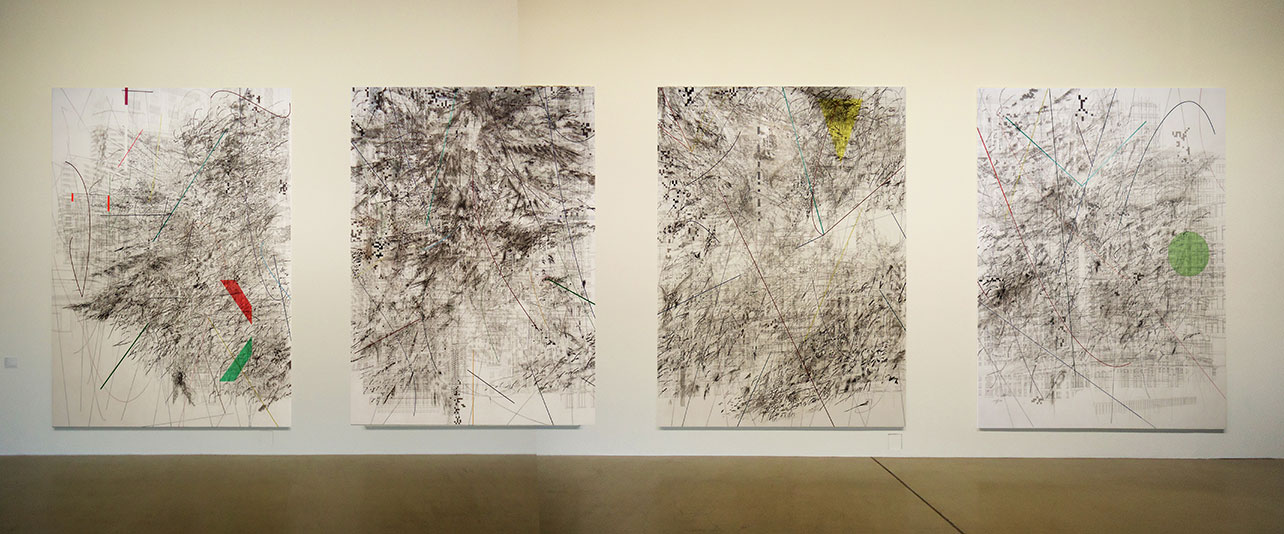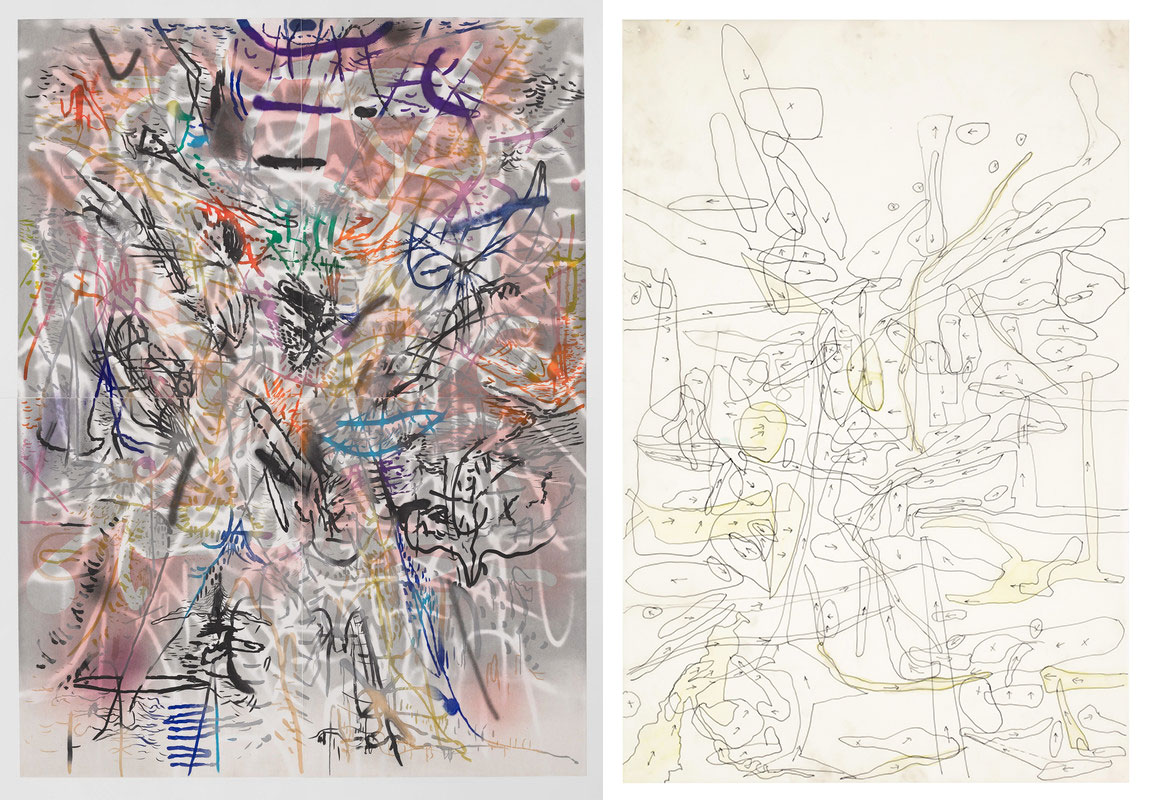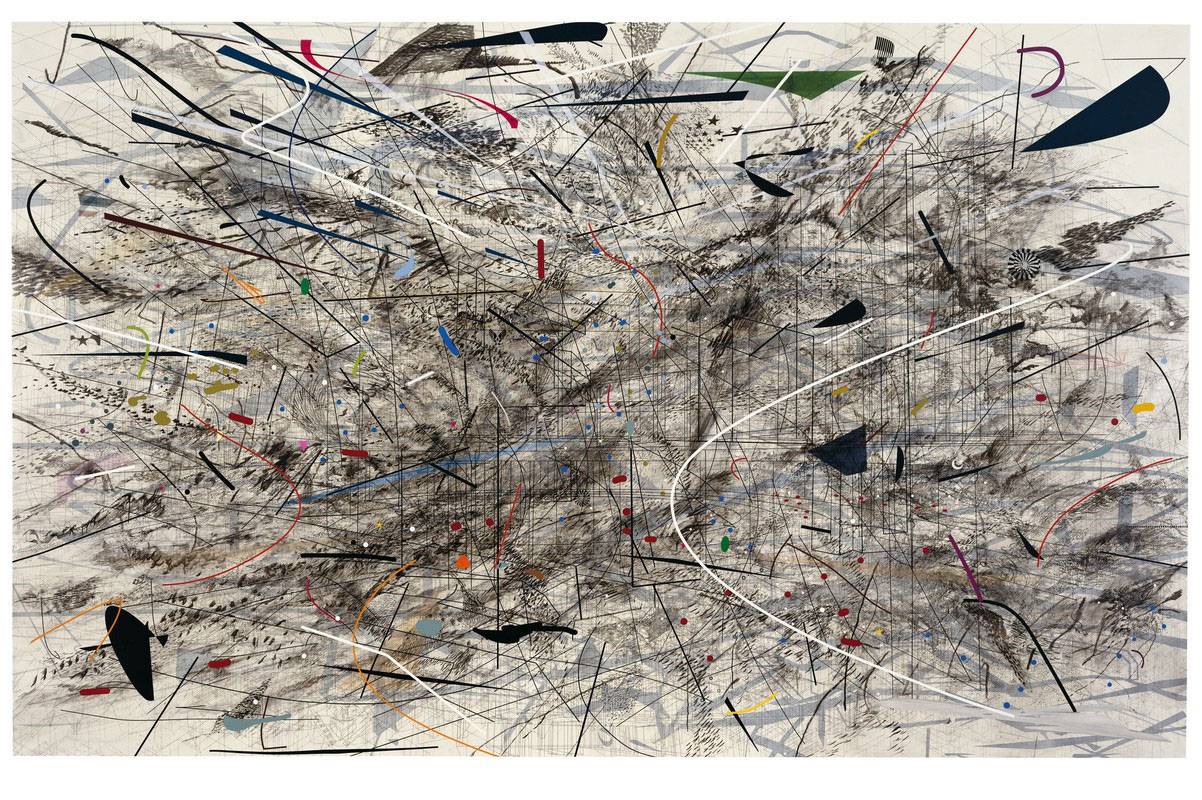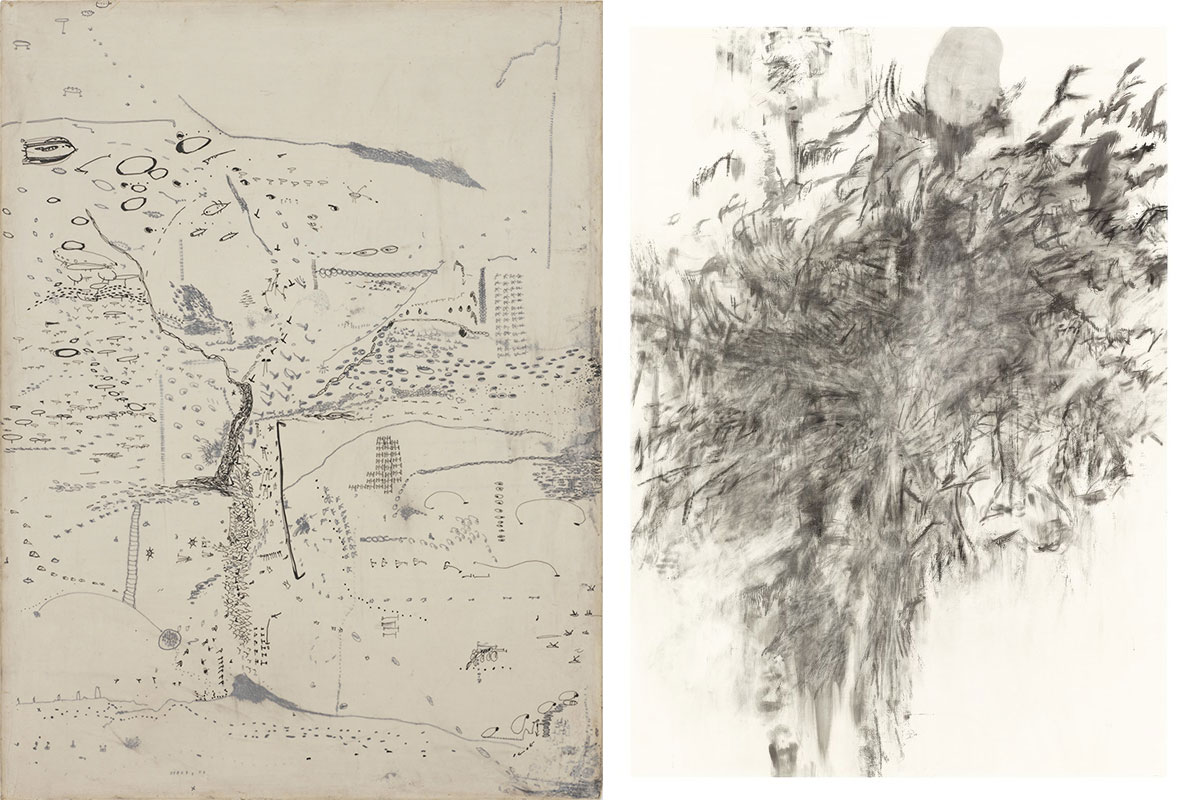ART-PRESENTATION:Julie Mehretu
 Julie Mehretu’s unique form of abstraction is connected to a deep meditation at the crossroads of mapping social and political sites and actions, shifting points of entry, new visual languages, mediated images, and corporeality. Her compositions are at once all-encompassing and destabilizing, offering a radical incoherence, which can trigger multiple experiences and senses.
Julie Mehretu’s unique form of abstraction is connected to a deep meditation at the crossroads of mapping social and political sites and actions, shifting points of entry, new visual languages, mediated images, and corporeality. Her compositions are at once all-encompassing and destabilizing, offering a radical incoherence, which can trigger multiple experiences and senses.
By Dimitris Lempesis
Photo: High Museum of Art Archive
“Julie Mehretu” at High Museum of Art is the artist’s first comprehensive survey is of the artist’s career, covering more than two decades of her work, from 1996 to the present, and uniting nearly 40 drawings and prints and 35 paintings predominantly monumental in size and scale. Mehretu’s work bears witness to the shaping of human consciousness through the combination and reconfiguration of sources and images that address history and its intersection with the present. Her process involves compiling a vast and diverse archive of sources, including diagrams and maps, cave markings, Chinese calligraphy, architectural renderings, graffiti, photojournalism and texts. The exhibition also reveals the centrality of drawing in Mehretu’s artistic practice, from her diminutive drawings made in the 1990s to her monumental paintings of the 2000s, and explores the abiding influences of indexing, diagramming, and mapping as well as their techniques, aesthetics, and ideologies.
Mehretu’s work of the past decade draws from present-day images of natural disasters, human rights atrocities and global conflicts. Her most recent work in the exhibition refers to the detention camps holding migrant children along the southern border of the United States and is often scaled to the size and reach of her body. This correspondence between the artist’s body and her distinctly physical application of paint (and erasure of objective imagery), in combination with fragmented images produced in drawing, printmaking and stenciling techniques, lend the recent work a palpable sense of urgency and poignancy. In early works such as “Untitled (two)” (1996), “Map Paint (white)” (1996) and “Untitled (yellow with ellipses)” (1998), Mehretu explores how to represent the cumulative effect of time by layering materials. In these paintings, she has embedded drawings between layers of poured paint, creating fossilized topographies. In “Stadia II” (2004) and “Black City” (2007), Mehretu interrogates sports and military typologies to disrupt modern conceptions of leisure, labor and order. The coliseum, amphitheater and stadium in “Stadia II” represent spaces designed to accommodate and organize large numbers of people but that also contain an undercurrent of chaos and violence. While “Stadia II” is filled with curved lines and an array of pageantry such as flags, banners, lights and seating, “Black City” is more linear and contains references to the military and war, including general stars and Nazi bunkers. Both works call attention to the ways in which modern culture and the spectacle of contemporary wars, such as the War on Terror and the Iraq War, are connected to imperialism, patriarchy and power.
The four-part “Mogamma” (2012) took significant inspiration from the 2011 Egyptian revolution, part of the Arab Spring of uprisings in the Middle East and North Africa. The work was named after a government administrative building on Tahrir Square that was seen as a symbol of modernism and the country’s liberation from colonial occupation when it was first built in 1949. It was later associated with government corruption and bureaucracy before eventually serving as a revolutionary site. Mehretu began work on the four vertical canvases by exploring the densely layered environment of Tahrir Square, where an array of architectures, including structures built in Islamic, European and Cold War styles coexist. She then created a web of drawings that combined the Brutalist architectural style of the Mogamma with details from other public squares associated with the revolutionary fervor of the Arab Spring, such as the amphitheater stairs and spiraling lights of Meskel Square in Addis Ababa, Ethiopia, and the midcentury high-rise buildings surrounding Zuccotti Park in New York. Over this, she layered drawings of global sites of public protest and change, such as Red Square in Moscow and Tiananmen Square in Beijing. “Mogamma” was installed in Documenta in 2012 and again in London in 2013. This exhibition reunites all four panels of the monumental painting and marks the first time the work has been shown in its entirety in the United States. Before traveling with the exhibition, “Part 2” had been on view at the High since the Museum acquired it in 2013.
Mehretu’s most recent paintings introduce bold gestural marks and employ a dynamic range of techniques such as airbrushing and screenprinting. The works draw on her archive of images of global horrors, crises, protests and abuses of power, which she digitally blurs, crops and rescales. She uses this source material as the foundation for her paintings, overlaying the images with calligraphic strokes and loose drawings. For example, “Conjured Parts (eye), Ferguson” (2016) links disembodied anatomy with a site of violence and political strife. The painting began with a blurred photograph of an unarmed man with his hands up facing a group of police officers in riot gear, which was taken during the protests following the fatal shooting of Michael Brown in Ferguson, Missouri. Mehretu layered color over a blurry, sanded black-and-gray background; fuchsia and peachy-pink areas rise from below while toxic green tones float above like distant skies drawing near. Outlines of eyes, buttocks and other body parts appear within the graffiti-like marks and black blots hovering over smoky areas, suggesting human activity obscured. In “Hineni (E. 3:4)” (2018), Mehretu addresses the fires caused by climate change and the intentional burning of Rohingya homes in Myanmar as part of a campaign of ethnic cleansing. The painting is based on an image from the 2017 Northern California wildfires, while the word “hineni” in the title translates to “here I am” in Hebrew, which was the biblical prophet Moses’s response to Yahweh (God), who called his name from within the burning bush. By interrogating three types of fires in this painting (one environmental, one intentional and one prophetic) Mehretu explores the contradictory meanings of a single elemental force.
Installed alongside these recent paintings, “Epigraph, Damascus” (2016) is a notable achievement in printmaking for Mehretu, representing a new integration of architectural drawings and painting overlaid with an unprecedented array of marks. Working closely with master printer Niels Borch Jensen, Mehretu used photogravure, a 19th-century technique that fuses photography with etching. She built the foundation of the print on a blurred photograph layered with hand-drawn images of buildings in Damascus, Syria, then composited that with a layer of gestural marks made on large sheets of Mylar. On a second plate, she executed her characteristic variety of light-handed brushstrokes, innovatively using techniques known as aquatint and open bite.
Info: Curators: Christine Y. Kim, and Rujeko Hockley, High Museum of Art, 1280 Peachtree St NE, Atlanta, Duration: 24/10/20-31/1/21, Days & Hours: Tue-Sat 10:00-17:00, Sun 12:00-17:00 (timed tickets are required in advance), https://high.org




Right: Julie Mehretu, Untitled (two), 1996, ink and acrylic on canvas, 22 × 18 in., private collection, © Julie Mehretu, photograph by Tom Powel Imaging





Right: Julie Mehretu, Being Higher II, 2013, ink and acrylic on canvas, 84 × 60 in., collection of Susan & Larry Marx; courtesy Neal Meltzer Fine Art, New York, © Julie Mehretu, photograph by Tom Powel Imaging
